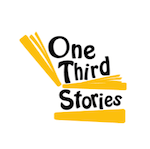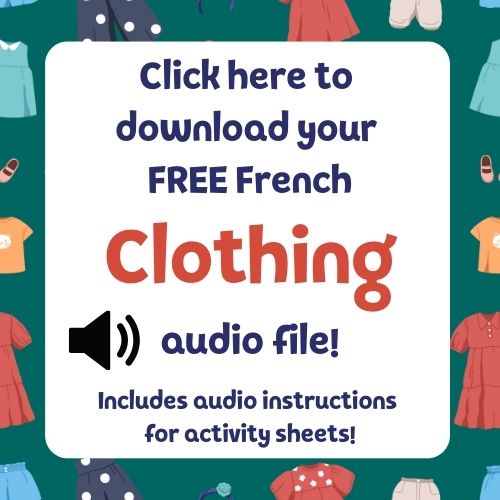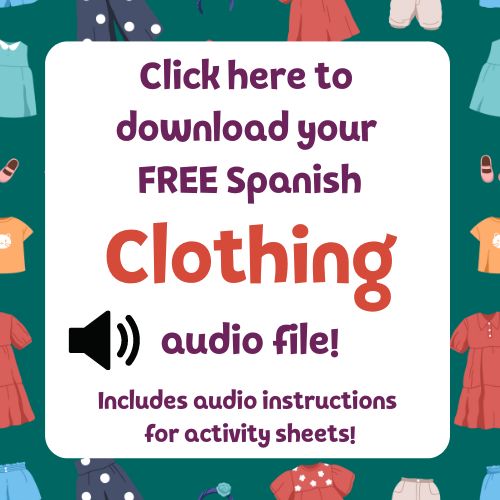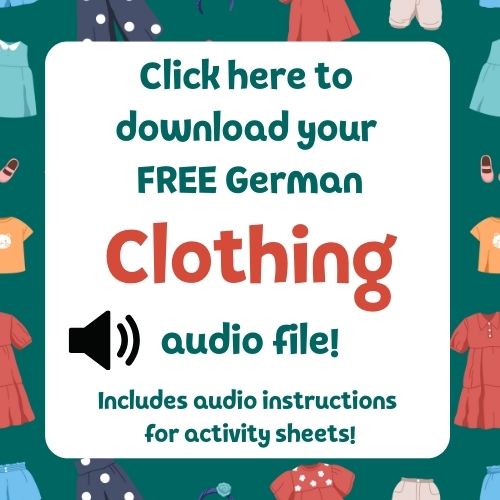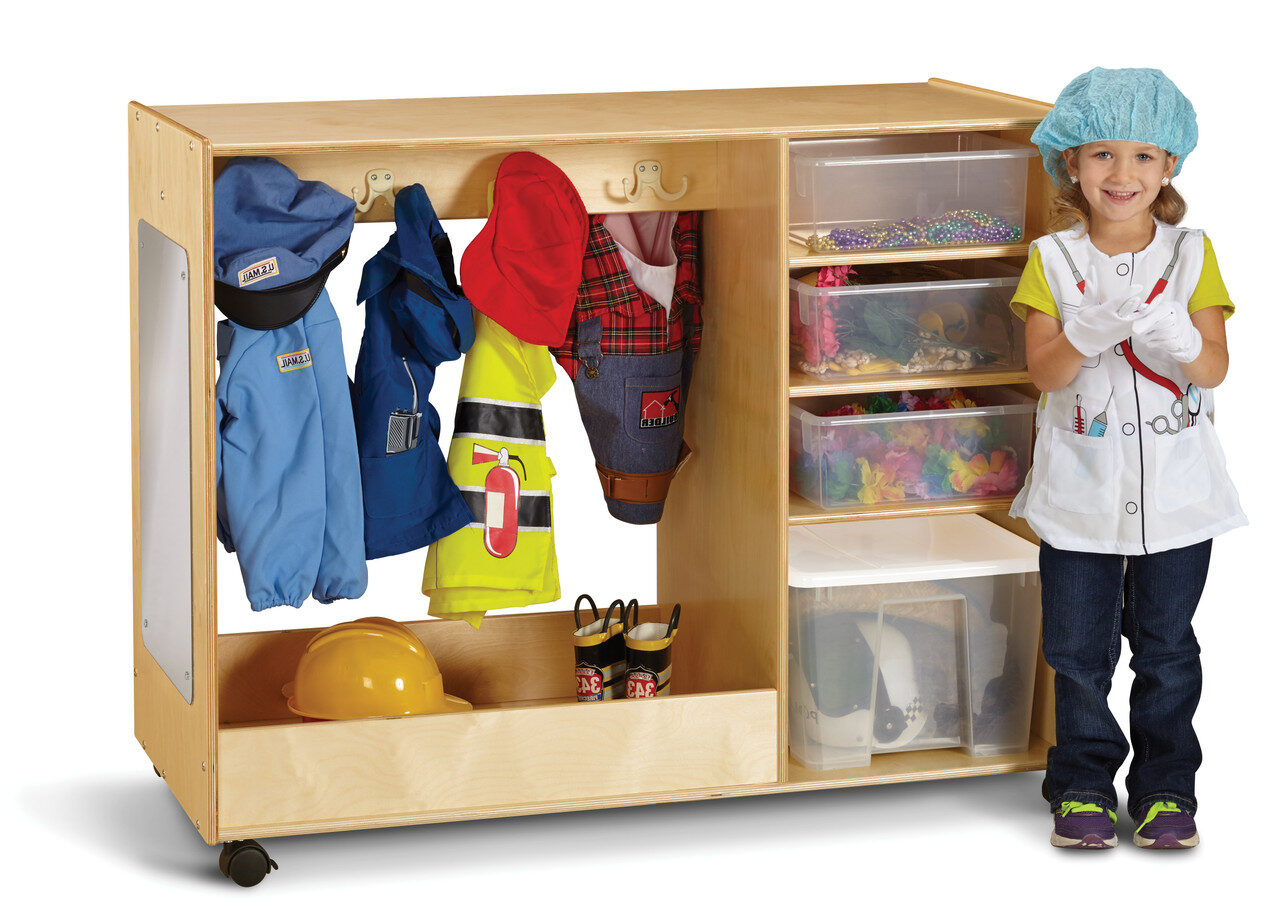
Research Insights
Using dress-up bins is more than just a fun activity for children—it’s a powerful educational tool for language learning. Research indicates that dramatic play, such as dressing up, can significantly promote language development. When children engage in role-play, they naturally expand their vocabulary, practice social interactions, and develop narrative skills.
According to a study by the National Association for the Education of Young Children (NAEYC), dramatic play encourages children to use new vocabulary in meaningful contexts, enhancing their language acquisition and retention (NAEYC). Additionally, the use of props and costumes in play allows children to immerse themselves in various roles, which fosters their ability to communicate complex ideas and emotions (NAEYC).
Reinforcing Clothing, Body Parts, and Color Words
Dress-up bins are particularly useful for teaching children clothing, body parts, and color words in a new language learning. We think dress-up bins are an especially good fit after reading Elliot or Sleuth Sloth, but if you don’t have those One Third Story boxes yet, you can find a free clothing words activity and audio file at the end of this post to get you started! Here’s how you can leverage this activity to enhance your child’s vocabulary:
1. Identifying Clothing Items:
- Allow your child to dress up and then ask them to identify each article of clothing they’ve put on. For example, “What are you wearing on your feet?” They can respond with, “I am wearing shoes” in the new language.
- Ask follow-up questions to reinforce vocabulary, such as “What color are your shoes?” or “Which body part are the shoes on?”
2. Role Reversal:
- Turn the activity around and have your child call out clothing words while you or an older sibling dresses up. This reversal helps reinforce their understanding and use of vocabulary.
- For instance, if your child says “hat,” the adult or sibling puts on a hat and then asks, “Where does the hat go?” prompting the child to say, “On the head” in the new language.
3. Dress-Up Game:
- If you have multiple children, turn the activity into a game by calling out clothing words during a specified time. The children must quickly find and put on the corresponding items.
- When the time is up, the child who finishes first lists each item of clothing to check for understanding. For example, “I am wearing a red shirt, blue pants, and a yellow hat” in the target language.
4. Index Card Dress-Up:
- Write clothing items on index cards. For younger children, draw a picture on the back of each card.
- Deal the cards out to each child. They must dress up according to the cards they receive, identifying each item as they go or at the end of the game. For example, “I have a jacket” or “This is a jacket” in the new language.
Tips for Parents
- Interactive Learning: Engage with your child during dress-up play. Ask open-ended questions and encourage them to describe what they are wearing and what others are wearing. This interactive approach deepens their understanding and use of new words.
- Consistent Practice: Regularly incorporate dress-up play into your child’s routine. Consistent exposure to new language vocabulary in different contexts helps solidify their learning.
- Cultural Relevance: Include clothing items that reflect different cultures to broaden your child’s understanding and appreciation of diversity while learning new words.
Conclusion
Dress-up bins offer a simple yet effective way to enhance language learning for children ages 4-9. By incorporating clothing, body parts, and color words into dress-up play, you create a dynamic and engaging learning environment. This method not only builds vocabulary but also fosters creativity, social skills, and cognitive development. Embrace the fun of dress-up play and watch your child’s language learning skills flourish!
For more detailed information on the benefits of dramatic play in language learning, visit the NAEYC website and explore their resources on early childhood education.
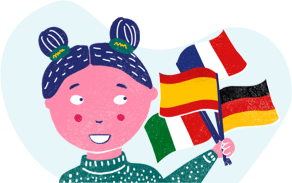


Choose a language
One Third Stories courses are available in French, Spanish, Italian and German.
Select a subscription
Choose between monthly or annual payment options.
Start learning
Receive your first audiobook and Story Box, and let the learning begin!.

Choose a language
Our courses are available in French, Spanish, Italian and German.

Select a subscription
Choose between monthly or annual payment options.

Start learning
Receive your first audiobook and Story Box, and let the learning begin!.
